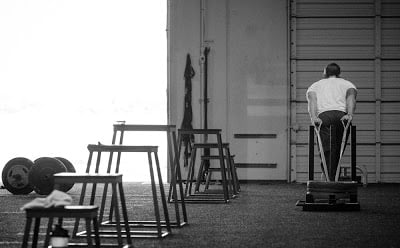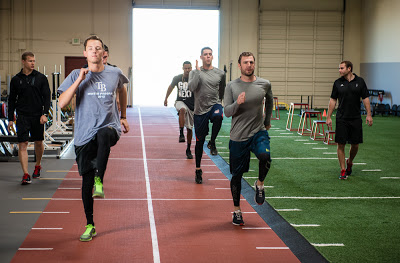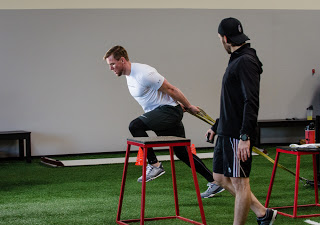
The disadvantages of long distance running have been reiterated on this blog for years. Yet, the problem, or in same cases a very unhealthy addiction, remains from our inability to really define long distance. After all, what is long distance exercise? How long is it?
The answer requires us to take a step back and ask WHY we are running in the first place.
This quest should strike at the heart of every coach and athlete, the ability to create a CULTURE OF INTENT, a place where every exercise prescription has a reason.
The reason and goal for prescriptions generally coincides with the timing of the exercise so we’ll start there.
Most likely you are trying to improve circulation, to “get the blood pumping” before something else (stretching, myofascial release, etc.). However, any elevation in activity will increase the activation of the cardiovascular system to supply oxygen and nutrients to the blood.

So if any increased activity will achieve this goal, we should be focusing on skill development. With requirements of up to 10,000 hours or more, repetition is the key to skill development. So use this time to develop proper footwork, awareness, and coordination for the upcoming skills.
We use skips or other drills to emphasize the proper angles of upcoming skills, just watch the coach attention to the right.

Are you trying to improve the cardiovascular system, the aerobic capacity? Unless you run marathons, anaerobic characteristics like sprinting, jumping, or agility must be developed as well. So cut your rest period down to emphasize the aerobic system’s role of replenishing the fuel (phosphocreatine) between explosive movements. We use density training, building the speed first then emphasizing less rest to stress the ability recover.
Anything longer than 20 or 30 yards ceases to emphasize acceleration, which is the key to any sport. Running longer than this distance emphasizes different angles.
Perhaps the most common rationale for running is to lose weight. Gyms devote entire rooms to “cardio”, and TV shows and sports organization run “fat camps” that all promise weight loss through exercise. The reality is that this a very poor choice to improve body composition and /or lose weight.
A 2012 research review examined all previous studies looking at why such weight loss from exercise is lower than predicted. The authors conclude that the small magnitude of weight loss is due to a concomitant increase in caloric intake. Basically, people eat more when they exercise more, and most exercise does not burn enough to justify the increase in calories. We know 20 minutes of hard exercise barely burns off a typical sports drink
Run to improve your acceleration technique so less than 20-30 yards, and for physique, look to improve your hormonal environment through regeneration, specifically
Protein- protein gives a sense of being full, higher carbohydrate foods just make you want to eat more
8 + hours of sleep – lack of sleep is one of the new leading culprits for obesity and weight gain. lack of sleep drives your cortisol levels up and increases insulin resistance just like eating poorly
“In general, for weight loss, exercise is pretty useless.” - Eric Ravussin, chair in diabetes/metabolism at Louisiana State University, prominent exercise researcher
Thomas DM, Bouchard C, Church T, Slentz C, Kraus WE, Redman LM, Martin CK, Silva AM, Vossen M, Westerterp K, Heymsfield SB. Why do individuals not lose more weight from an exercise intervention at a defined dose? An energy balance analysis. Obes Rev. 2012 Oct;13(10):835-47.